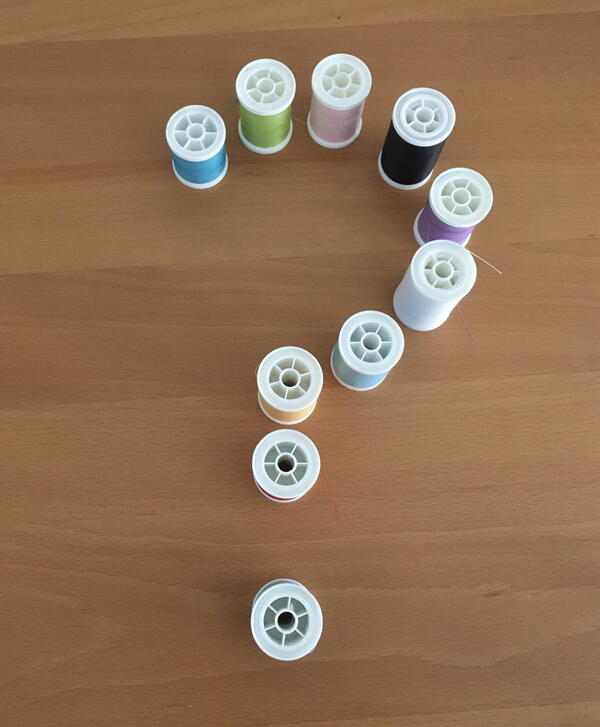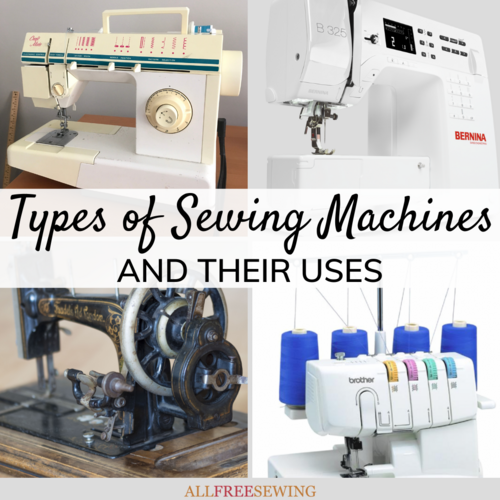Types of Sewing Machines and Their Uses
With this guide, learn how sewing machines work, the types of sewing machines available, and more.
What is a Sewing Machine?
It may seem like a silly question on the surface but many don't know the details about sewing machines.
If you're new to the craft of sewing you might be wondering what is a sewing machine anyway? Additionally, how is using a machine different than sewing by hand? These are really important questions for several reasons.
Sewing machines are a financial investment, you want to be sure you're selecting the right kind, and there is an overwhelming number of them for sale. This handy guide goes over the types of sewing machines available to the average sewist and factories and their uses.
It also explores what exactly counts as a sewing machine and the various types of sewing machines that you might want in your own home. Plus, we're sharing more information about sewing machines that you can find in full elsewhere on our site.
What is a Sewing Machine Exactly?
A mechanical machine that attaches fabrics using a needle and thread is known as a sewing machine. They’ve been around since the late 1700s, and helped drive the industrial production of clothing and other sewn items.
As opposed to sewing by hand, a machine is much quicker, creates uniform stitches, and can prevent hand strain. They use a top thread (spool) that goes through a needle and a bottom thread (bobbin) to create lines of stitches. Before you invest in a new sewing machine, let’s look at the types and the various pros and cons of each.

Types of Sewing Machines
Home Use
The most common type of sewing machine outside of industrial settings is the basic home use sewing machine. They are widely available at department and sewing stores, as well as online from many companies.
Designed for regular to everyday use, a standard machine should last you many years or even decades (I bought a machine 25 years ago that still works well! It is shown below.).
Now they are almost all computerized, and the tension and stitch lengths can be set with the press of a button. (My modern Brother sewing machine is shown below.)
Doing extensive online and word-of-mouth research is recommended before your purchase. A home machine will be able to help you create clothing, home furnishings, quilts, and other crafts.
For high capacity production, you’ll probably need an industrial sewing machine (more on those later).
Mini / Compact
A smaller version of the regular home use style, mini-sized sewing machines are meant to be used in tinier spaces. They’re also easy to store away if you only sew occasionally. Compact machines typically have a handle and a smaller size, and often have other features to make it perfect for a small sewing space.
Portable
If you plan to take your sewing machine somewhere with you on a regular basis then a portable machine is the way to go. There’s a lot of crossover with the compact machines so consider those as well when shopping around. Just make sure your travel machine has a handle and a case or cover! A case will protect it from the elements when you’re going to your sewing classes (or any other circumstances when you’ll need to take it out of the studio).
Industrial
Factories, universities with fashion programs, and fashion designers almost always use industrial sewing machines. Made specifically for large volume production and thicker fabrics, an industrial machine is a much larger financial investment. They are usually connected to a table, so a larger studio space is helpful. Industrial sewing machines also need to be serviced and repaired by professional technicians, so factor that into the cost of owning and operating this kind of device.
Sergers and Other Sewing Equipment
Other large equipment for sewing includes sergers and embroidery machines. Sergers are also commonly known as "overlockers" or "overlocking" machines, while the kind that produces a tiny stitched edge are called "baby locks."
They create a finished edge using four threads that come in large cone-shaped spools. Sergers can also be used to connect two pieces of fabric instead of a regular sewing machine. While they are notoriously hard to thread, the process becomes much less daunting after a few successful attempts.
Learn more about sergers with our guide, What is a Serger?
Embroidery machines are another specialized kind of sewing equipment. They are typically computerized and can embroider a variety of designs and letters onto fabric. The range of prices and quality varies greatly, so watching the embroidery machine stitching in person will help you make the most informed purchase.
BONUS! Resources About and for Sewing Machines
- How to Choose a Sewing Machine - This may be the most important question in regards to sewing machines. Don't buy one until you read this.
- How Do You Use a Sewing Machine? - Once you've purchased your machine, learn how to use it with this helpful page on the basics.
- How Do You Clean a Sewing Machine? - If you don't clean your machine, it can malfunction, so this is an essential skill to learn. Questions about cleaning are answered here!
- How Do You Thread a Sewing Machine? - Not understanding this can lead to lots of issues and anger, which is why many machine owners ask this. Follow along with us and learn!
- Thread for Sewing Machine: What's Best? - Choosing the right thread for a sewing project or your sewing machine is one of the most important parts of machine sewing.
- What is Sewing Machine Oil? - Lots of people ask this because many think any oil can be used in machines. Not the case! Learn what it is and why it's important.
- Machine Stitching Basics - Sewing machines have so many stitches, it's important to know what they are and when to use them. This page has the answers.
- Sewing Machine Paper Practice Sheets - These free printable sheets allow you to practice your machine stitching.
Want More?
What Does a Bobbin Do? >>
Do you have a favorite kind of sewing machine or equipment?

